The city of Bitche is home to over 680 trees, spread across its streets, parks, and gardens. These trees are not just decorative elements; they tell the city’s history, purify the air, provide shade in summer, and serve as habitats for many insects and birds.
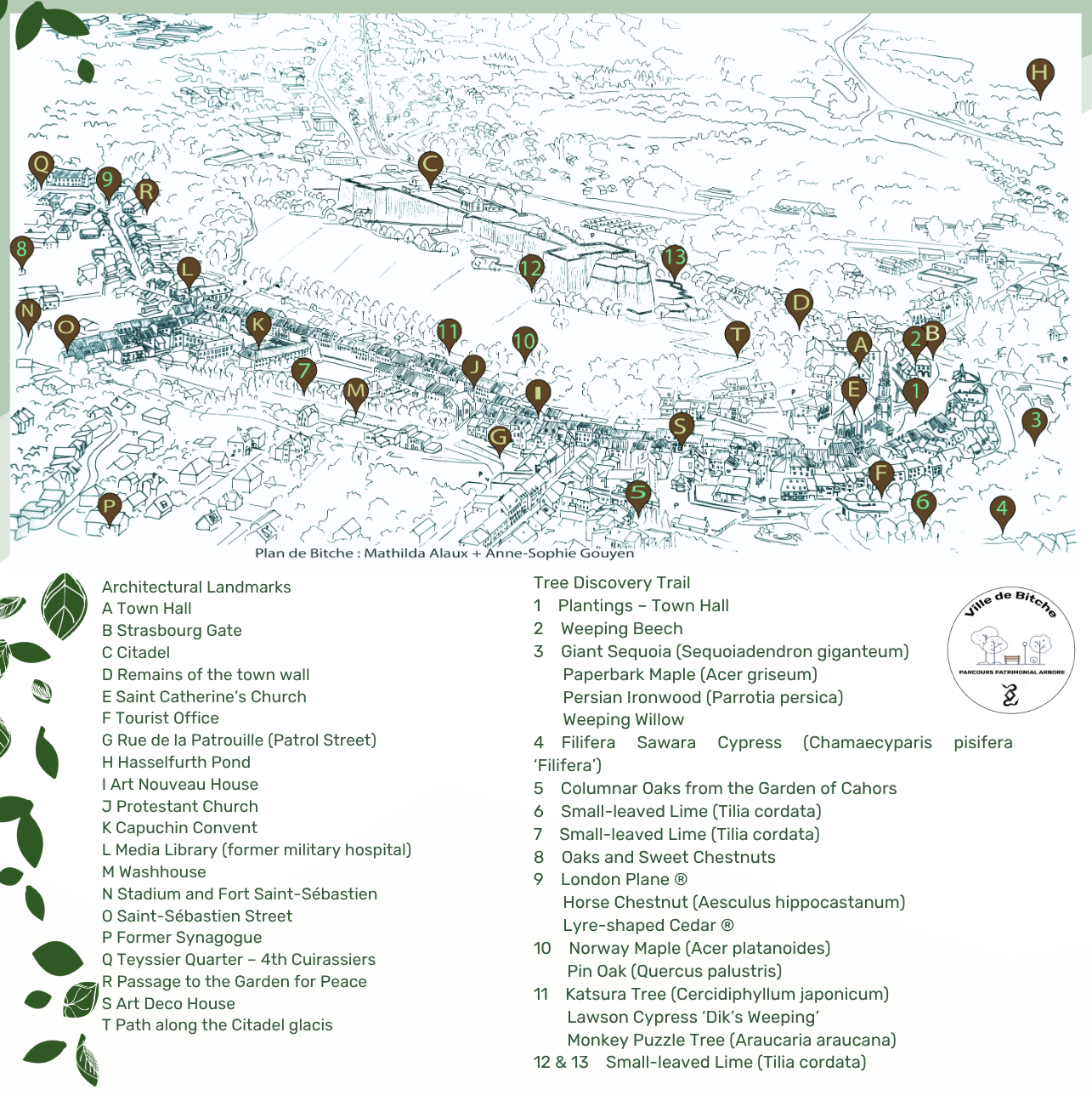

SOME REMARKABLE SPECIES
These inserts allow you to discover some 'interesting' trees in the heart or near the city. They were developed with the advice of Gilles FAUCHON, Moselle delegate of the 'Remarkable Trees' Association.
Some 'noteworthy' trees, some of which will be proposed for classification as 'remarkable trees'.
MARKER 9: THE LEBANESE CEDAR
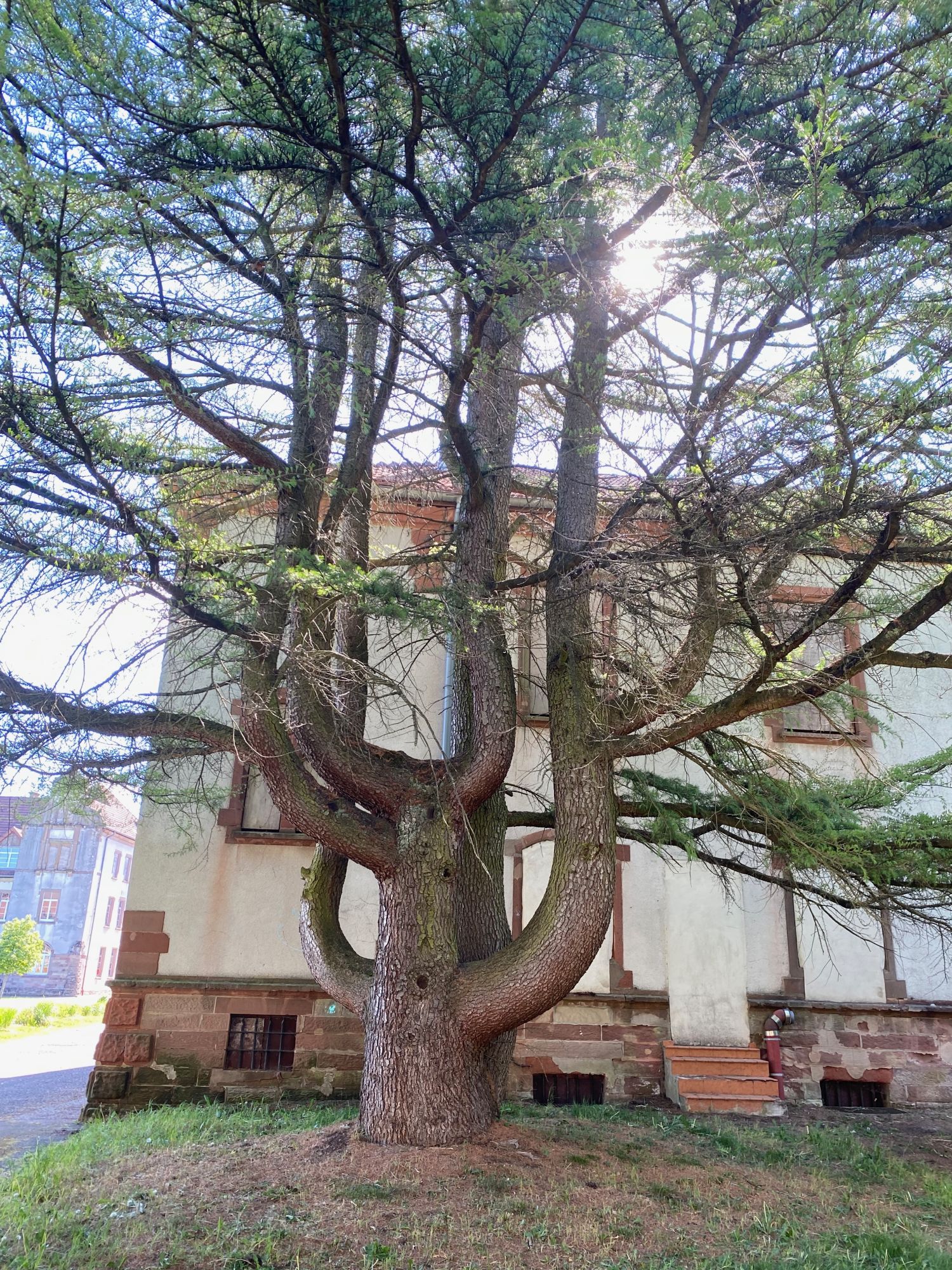
With its lyre-shaped silhouette, this tree embodies the elegance and grandeur characteristic of Lebanese forests. Over two centuries old, its origins remain mysterious, but its presence commands respect.
Standing 27 meters tall with a diameter of 4.5 meters, it stands as a silent witness to history. Its foliage releases phytoncides, volatile substances rich in essential oils, known for their soothing properties, especially against migraines.
NOTE FROM THE TREES ASSOCIATION
This tree also finds literary resonance in the posthumous work of Antoine de Saint-Exupéry, “Citadel” (1948), where it symbolizes strength and wisdom.
Today, it is listed as a potentially remarkable tree, a distinction that reflects its ecological, historical, and cultural value.
???? The Horse Chestnut – A Tree Full of Surprises
The Horse Chestnut (Aesculus hippocastanum) is a tall, beautiful tree often found in parks, gardens, and along wide avenues. It’s famous for its spectacular white flowers in spring and its shiny brown conkers in autumn.
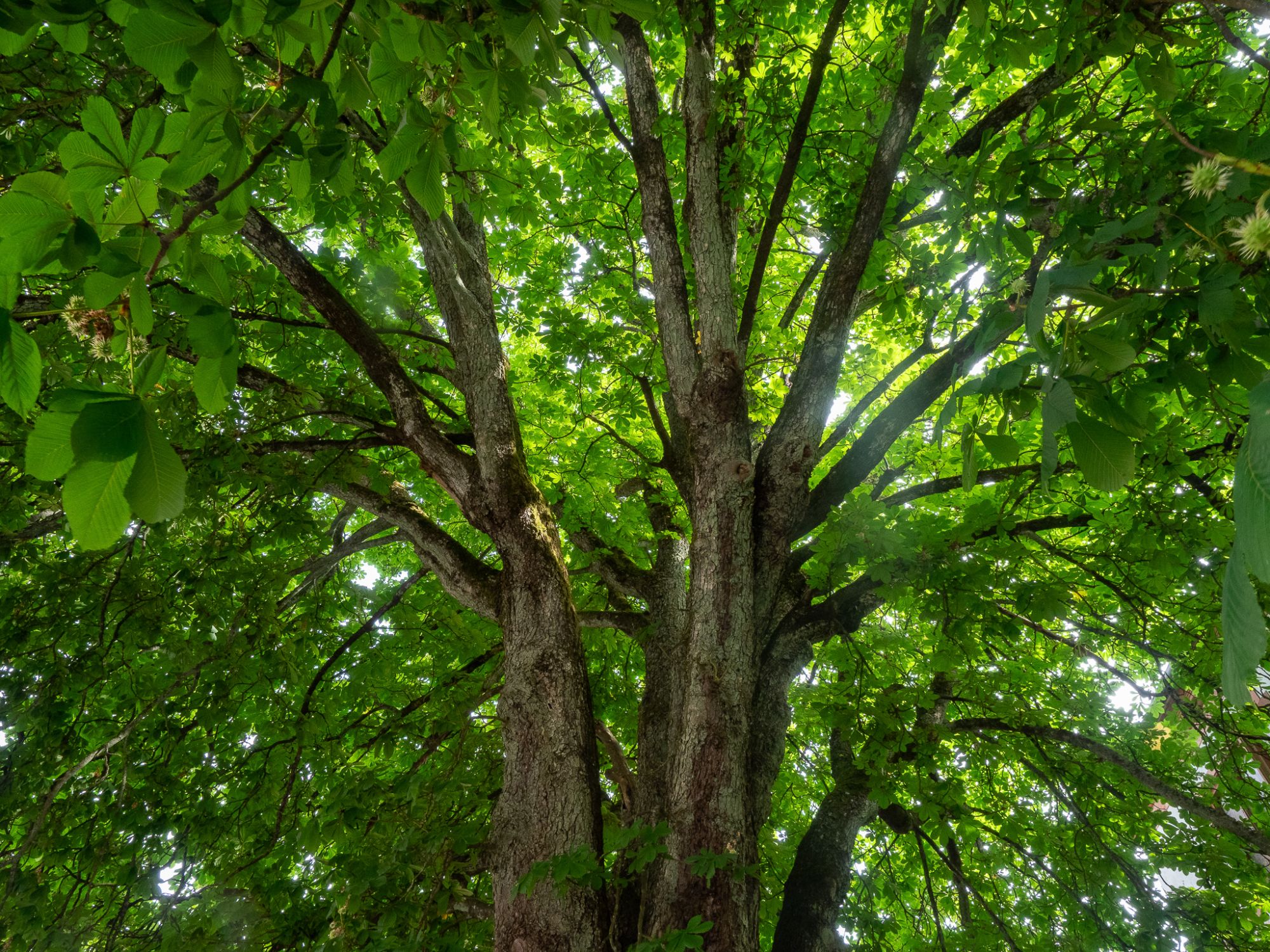
???? Where does it come from?
Despite the name “horse chestnut from India,” this tree doesn’t come from India. It originally comes from the Balkan region (Greece and Albania).
???? What makes it special?
-
Large, hand-shaped leaves
-
Blooms in May – with white flowers marked with yellow and red spots
-
In autumn, it produces round, spiky green fruits that open to reveal one or more shiny brown seeds called conkers
⚠️ These conkers are not edible! (Don’t confuse them with sweet chestnuts!)
???? A tree for nature
-
Its flowers attract lots of bees and insects
-
In summer, it gives plenty of shade
-
In autumn, children love collecting and playing with the conkers
???? Did you know?
-
The seeds contain aescin, a natural substance used to treat vein problems in herbal medicine
-
A horse chestnut tree can live for over 200 years
-
Sadly, it’s sometimes attacked by a small pest called the leaf miner moth
So next time you walk through a European park in spring or autumn, take a closer look – you might see a horse chestnut tree in full bloom, or spot a shiny conker on the ground! ????????
Marker 8: The Quercus robur, or English oak.
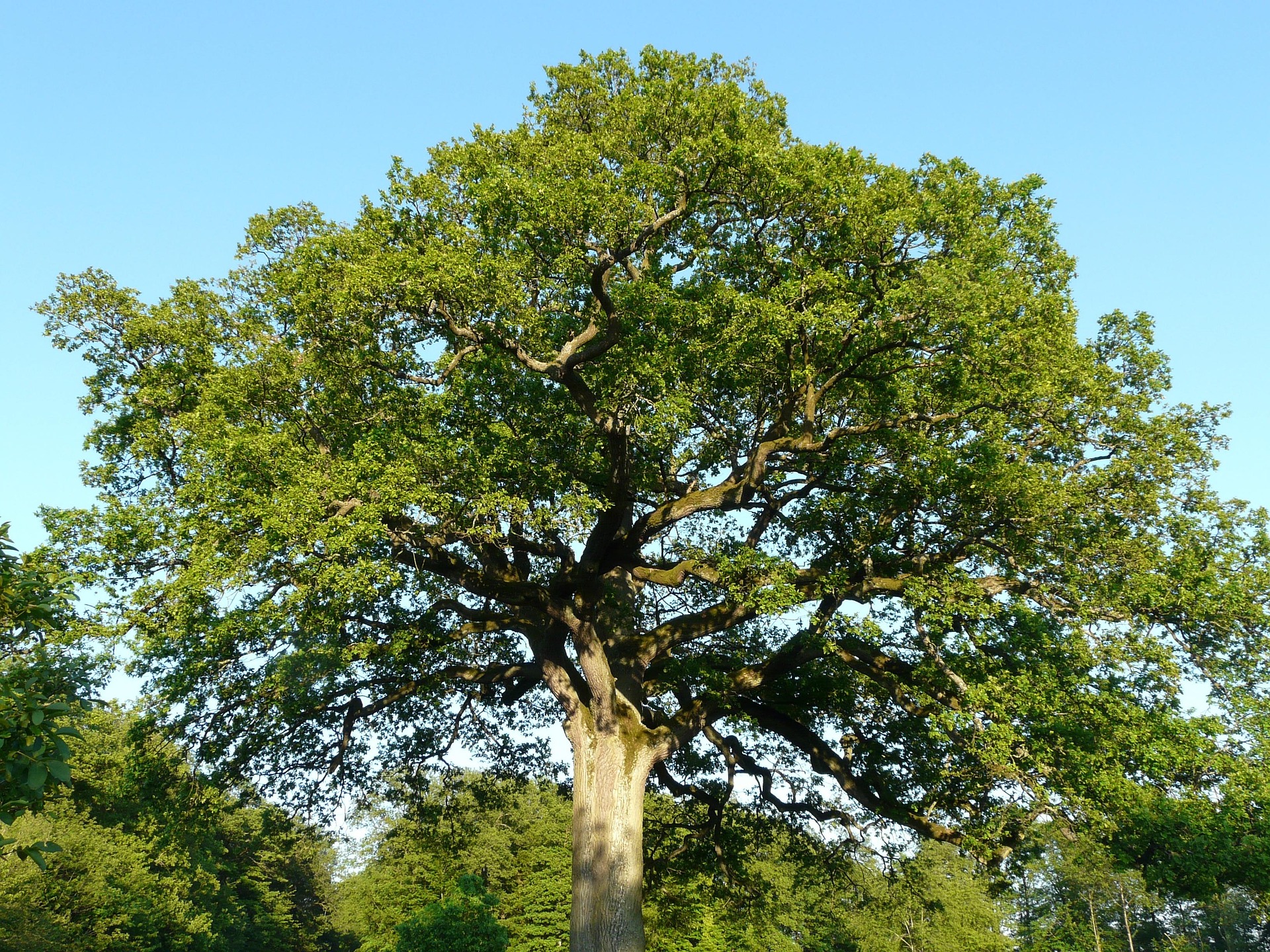
Leaves: Lobed, with 4 to 8 pairs of rounded lobes. The base is characteristic, forming two small “ears” (auricles). Green in summer, they turn yellow to golden brown in autumn.
Acorns: Attached to long stalks (5 to 8 cm), which gives the tree its name “pedunculate oak.” The acorns are elongated, green at first, turning light brown when mature.
Bark: Gray-brown, thick, and deeply fissured in older trees. It has a rough, almost grid-like texture.
Growth form: A massive and broad tree, reaching heights of 20 to 40 meters. Its trunk is often impressive, with strong, spreading branches.
Flowers: Small and inconspicuous. The male flowers form hanging, yellowish catkins in spring. The female flowers are much smaller, appearing in small clusters near the leaves.
Location: Found in deciduous forests, parks, and often as a solitary tree in fields, where it stands as a majestic specimen.
Longevity: An extremely long-lived tree, capable of living for several centuries, even over 1,000 years.
Uses: Its wood is strong and durable, used for carpentry, construction, and barrel making. The acorns are a valuable food source for many forest animals.
Visible: You can admire beautiful specimens around the Charles Wahl municipal stadium.
Marker 3: The Pseudotsuga menziesii, or Douglas fir.
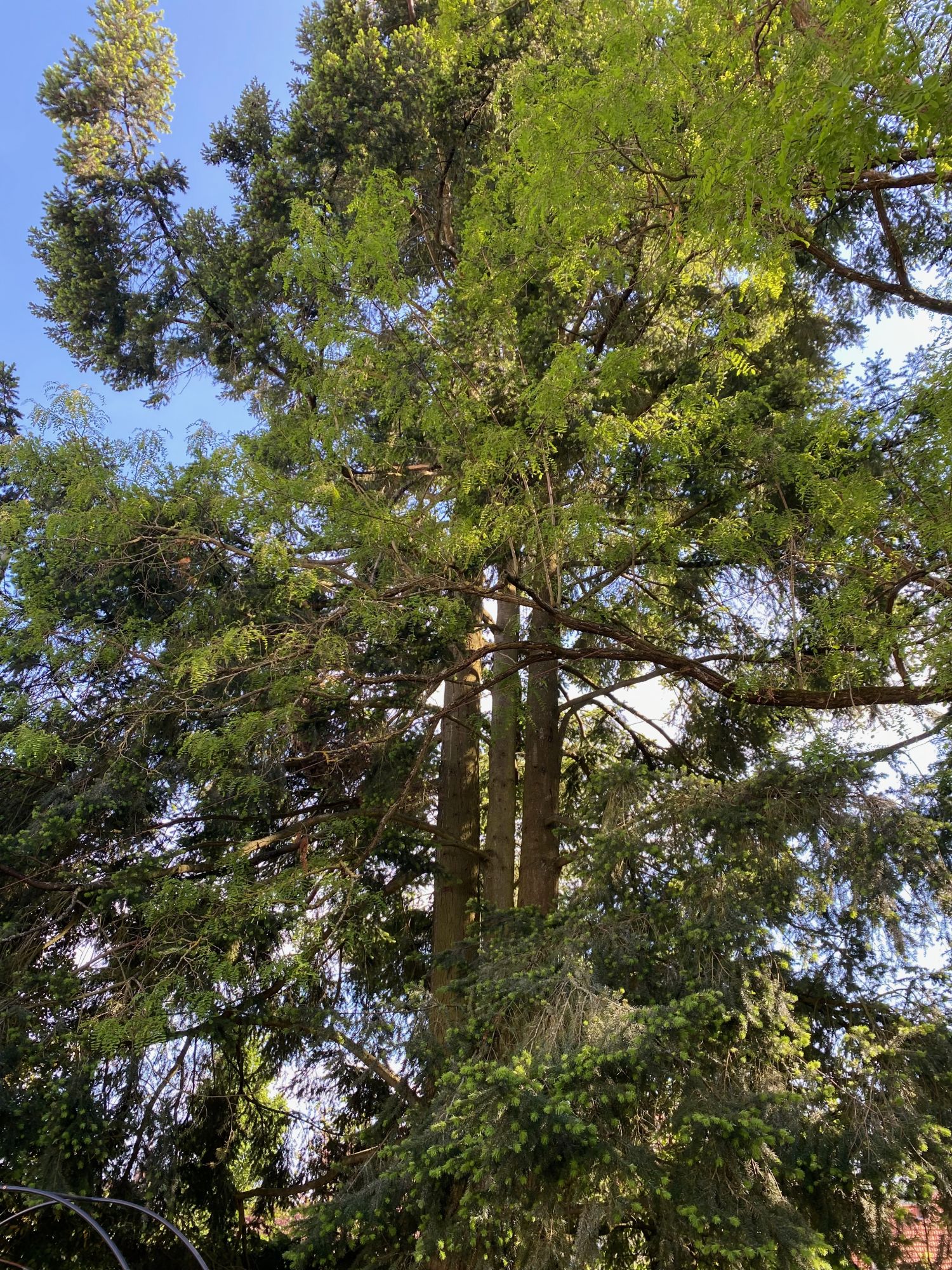
Needles: Soft, flat and green, arranged in a spiral around the twigs. When you rub the needles, they give off a pleasant lemony or resinous scent. The underside of the needles has two white stripes (stomatal).
Cones: Its cones are pendulous (6 to 10 cm long), with brown scales covered with small three-pointed bracts, resembling protruding mouse tongues. This detail is one of the Douglas fir's signatures.
Bark: Red-brown, thick and cracked on old trees. Grey and smooth on young trees.
Growth habit: Large tree reaching 50 to 70 metres in height in Europe (up to 100 metres in its natural habitat in North America). Conical silhouette, especially in young trees.
Wood: Its wood is of high quality, durable and often used in joinery and construction.
Origin: Native to the west coast of North America. Introduced to Europe in the 19th century as a forest and ornamental tree.
Where: Planted in parks, gardens and especially forests for its precious wood.
MARKER 10: Cercidiphyllum japonicum, or caramel tree
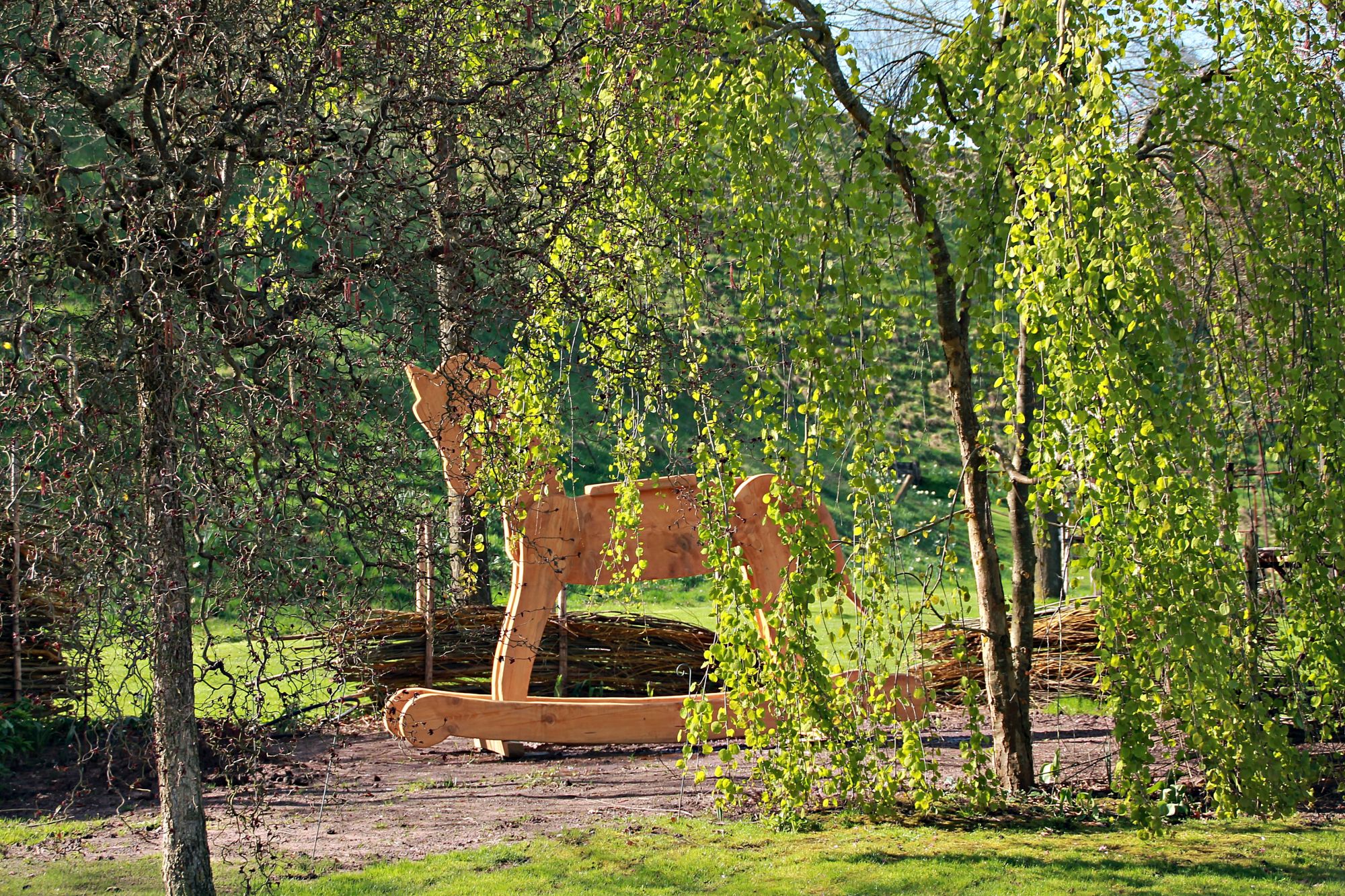
Leaves: Heart-shaped, with slightly toothed edges. Light green in spring, turning dark green in summer, they take on spectacular hues in autumn: yellow, orange, pink and purple. The leaves give off a sweet smell of caramel or burnt sugar when they fall to the ground in autumn, hence its name.
Growth habit: Medium-growing tree, reaching between 10 and 15 metres in height. Often with a single trunk or several trunks creating an elegant, spreading silhouette.
Bark: Grey-brown, with vertical cracks on older trees.
Flowers: Small and discreet, appearing in spring before the leaves. The flowers are separate: the males are reddish, the females are green.
Fruit: Small, elongated capsules containing winged seeds.
Origin: Native to the forests of Japan and China.
Use: Often planted as an ornamental tree in parks and gardens for its autumn colours and characteristic fragrance.
MARKERS 10 and 11: Chamaecyparis lawsoniana ‘Diks Weeping’, or weeping Lawson cypress
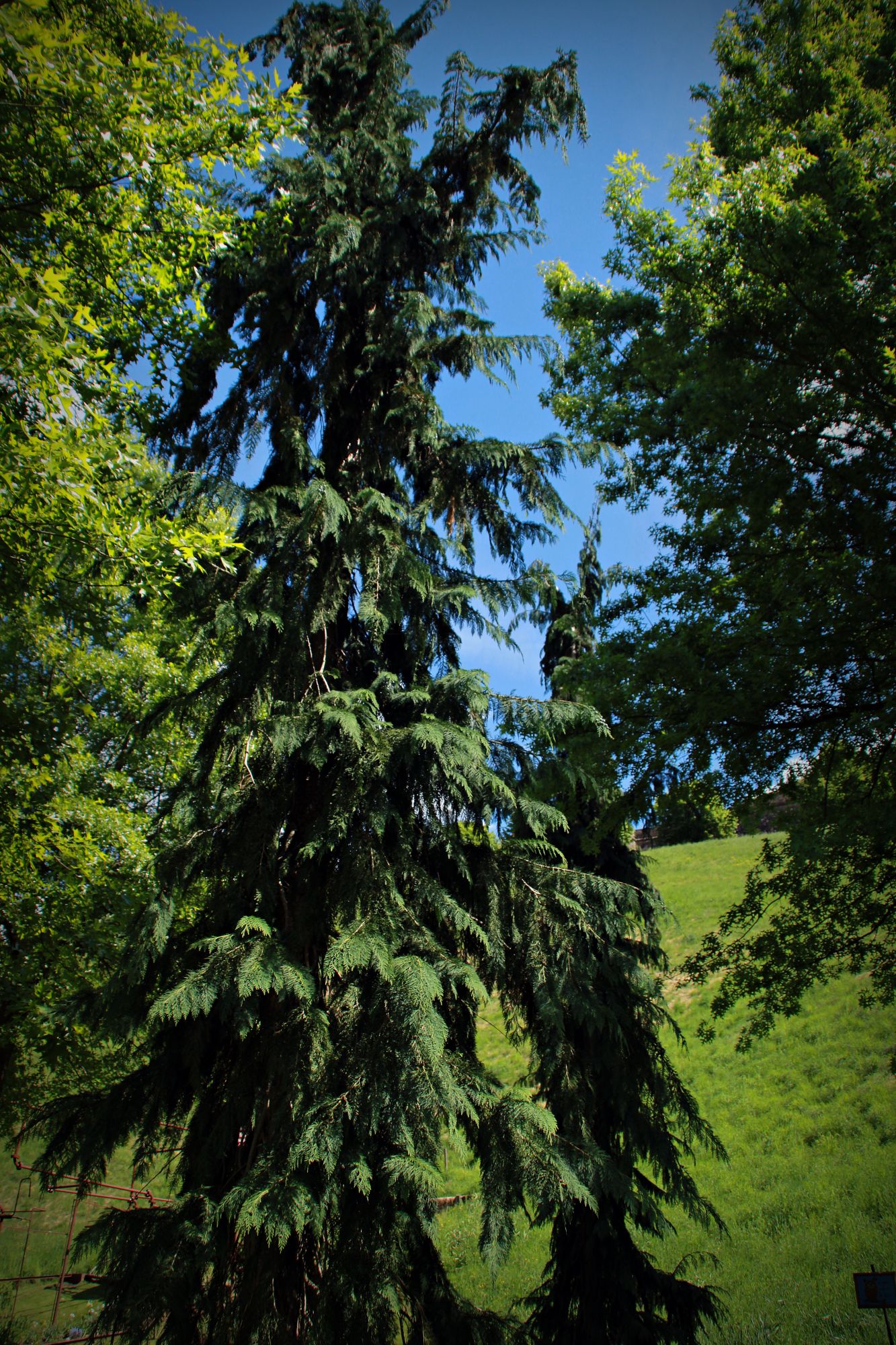
Growth habit: A very characteristic weeping form, with branches that droop elegantly towards the ground. It can grow to between 4 and 6 metres tall at maturity.
Foliage: Its drooping branches bear green scales, often tinged with blue-green. In winter, the foliage can take on a slightly bronze tinge.
Bark: Thin, reddish-brown, which can become slightly cracked with age.
Cones: Small (8 to 12 mm), round, with scales that open to release seeds.
Odour: Its twigs give off a slight resinous odour when rubbed.
Location: Often planted as an ornamental tree for its elegance and distinctive silhouette. It is appreciated in gardens for creating a cascade of vegetation. It can be seen in the Peace Garden.
MARKERS 3 & 10: Acer pseudoplatanus, or sycamore maple

Leaves: Large (10 to 15 cm), hand-shaped with five well-cut lobes. The upper surface is dark green and the underside is lighter, sometimes slightly bluish. In autumn, they take on a golden yellow colour.
Bark: Grey and smooth in young trees, becoming scaly and peeling off in irregular patches with age, revealing light brown to pink patches.
Flowers: Hanging yellow-green clusters (called panicles) appear in spring.
Fruit: Samaras arranged in pairs, forming a wide angle (often almost 180°). These small winged seeds spin when they fall.
Growth habit: Large tree reaching 20 to 35 metres in height. Broad, rounded crown.
Location: Common in deciduous forests, parks and gardens. Tolerates varied soils and urban conditions.
Location: In the Peace Garden, at the Stadtweiher and at the Etang d'Hasselfurth.
MARKERS 12 and 13: The Tilia platyphyllos, or large-leaved lime tree
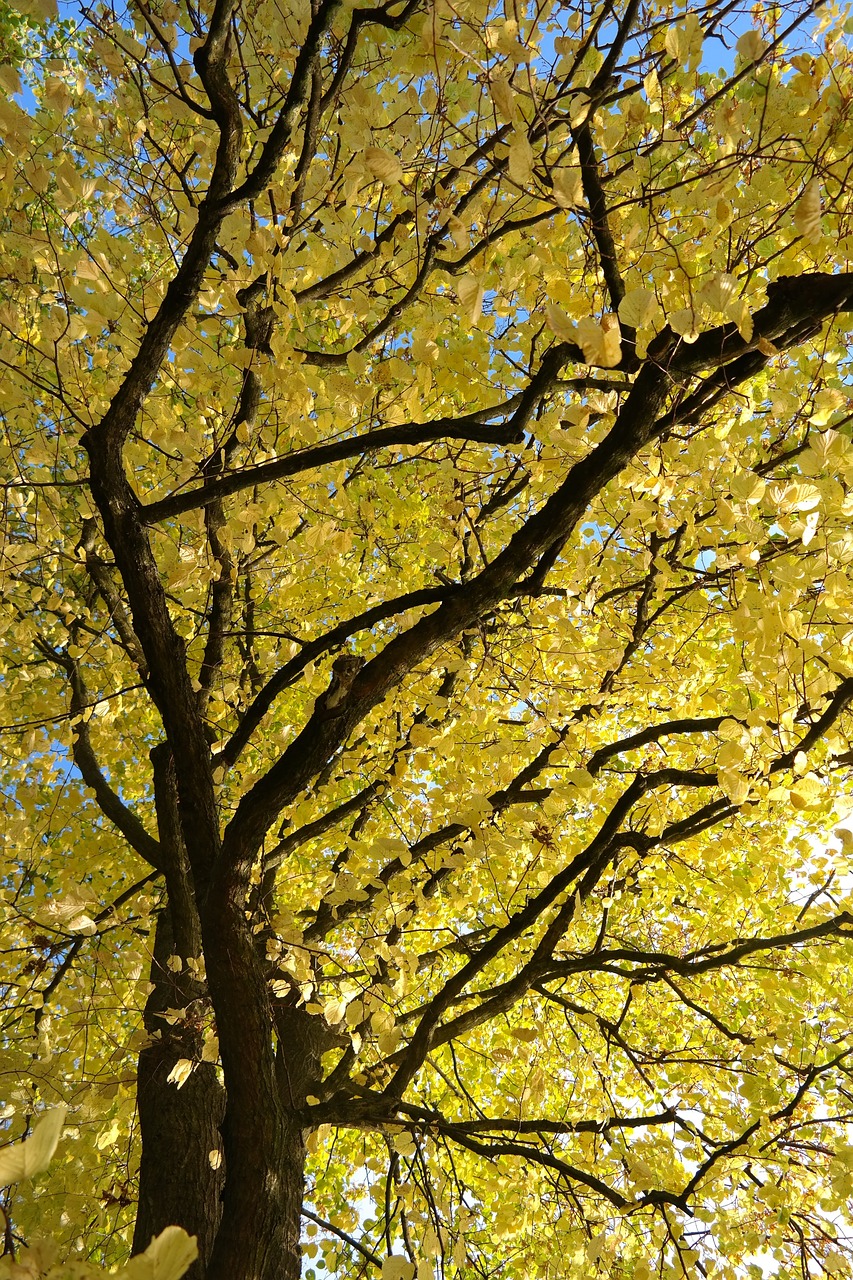
Leaves: Large (up to 15 cm), heart-shaped with a tapering tip. The upper surface is green and slightly rough, while the underside is lighter and covered with small white hairs. The veins are clearly marked.
Flowers: In June-July, it produces clusters of very fragrant yellow flowers. These flowers are rich in nectar and attract many insects, particularly bees.
Bark: Smooth grey in young trees, becoming more fissured with age.
Fruit: Small, round capsules covered in hairs and attached to a long, pale yellow, wing-like bract.
Growth habit: A large tree with a dense, rounded crown. It can reach up to 30 metres in height.
Location: Can be seen on the path around the citadel. They were replanted in XXX.
Weeping trees are distinguished by their characteristic habit, with branches drooping towards the ground, creating an elegant and often romantic silhouette. Here's how to recognise them:
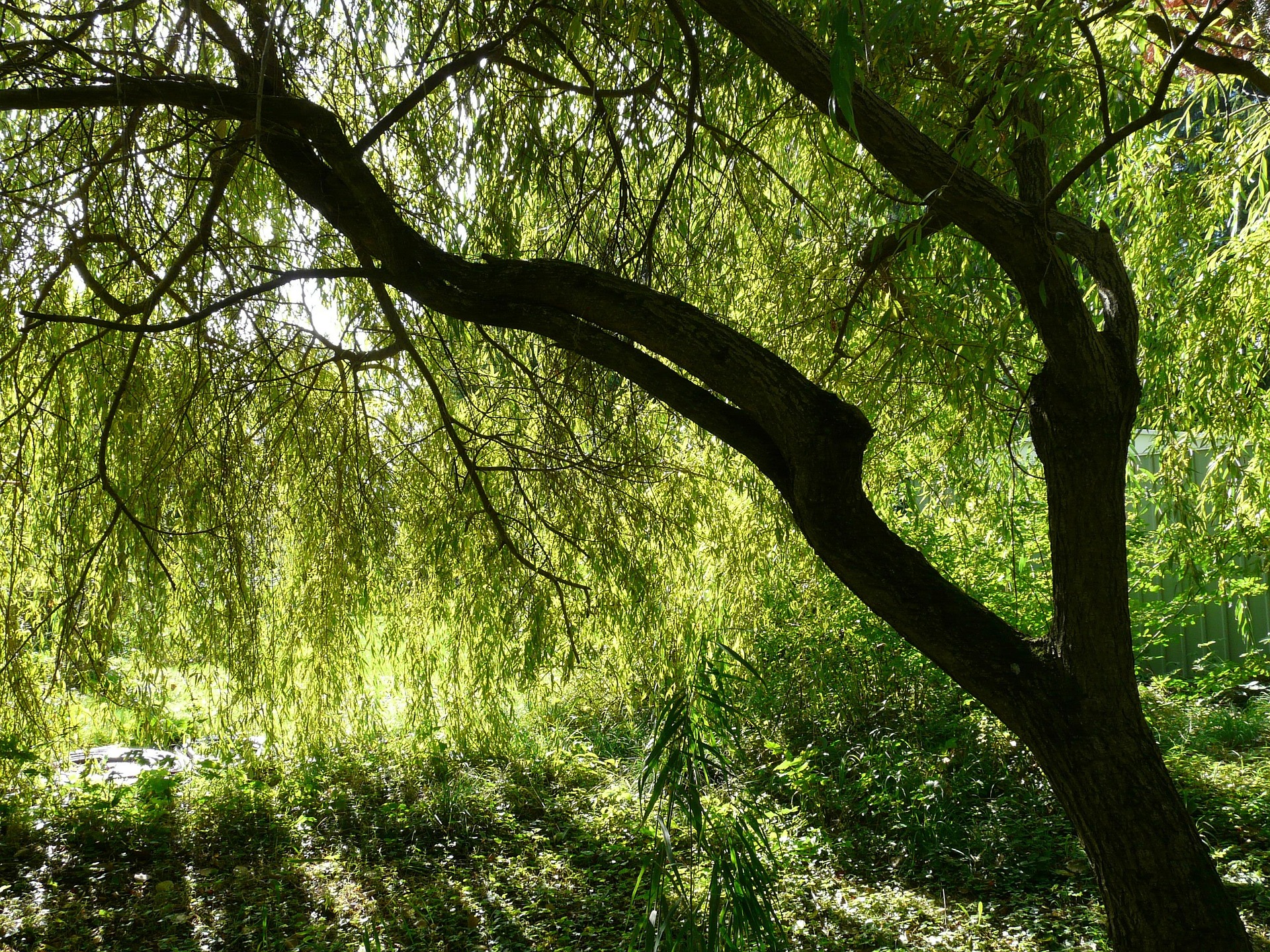
Characteristics of weeping trees
Growth habit: Their branches are long, slender and drooping. They can sometimes touch the ground.
Growth: Branches often grow downwards as soon as they emerge from the trunk.
Overall appearance: They have a parasol, waterfall or tent-like silhouette.
Examples of weeping trees and how to recognise them
Weeping willow (Salix babylonica): Long, narrow, lanceolate leaves, green with a slightly silvery underside. Very flexible branches that fall to the ground. Often grows near water, where it is even more majestic.
Weeping Beech (Fagus sylvatica ‘Pendula’): Oval, shiny green leaves in summer, turning golden in autumn. Smooth grey bark that cracks with age.
Weeping Cherry (Prunus serrulata ‘Kiku-shidare-zakura’): Pink or white flowers in spring, in drooping clusters. Serrated leaves, often red or bronze when young. A small tree, often used as an ornamental.
Weeping Sophora (Sophora japonica ‘Pendula’): Small, dark green, compound leaves in pairs and long, slender, drooping branches. Yellow flowers in clusters in summer (on older specimens).
Weeping Lawson Cypress (Chamaecyparis lawsoniana ‘Diks Weeping’): Scaly green or blue-green foliage on drooping branches. Narrow, drooping form.
Why do trees become weeping?
These shapes are often the result of horticultural selection.
Weeping trees are generally varieties grafted onto rootstocks to retain their shape.
MARKER 3: Sequoiadendron giganteum, or giant sequoia
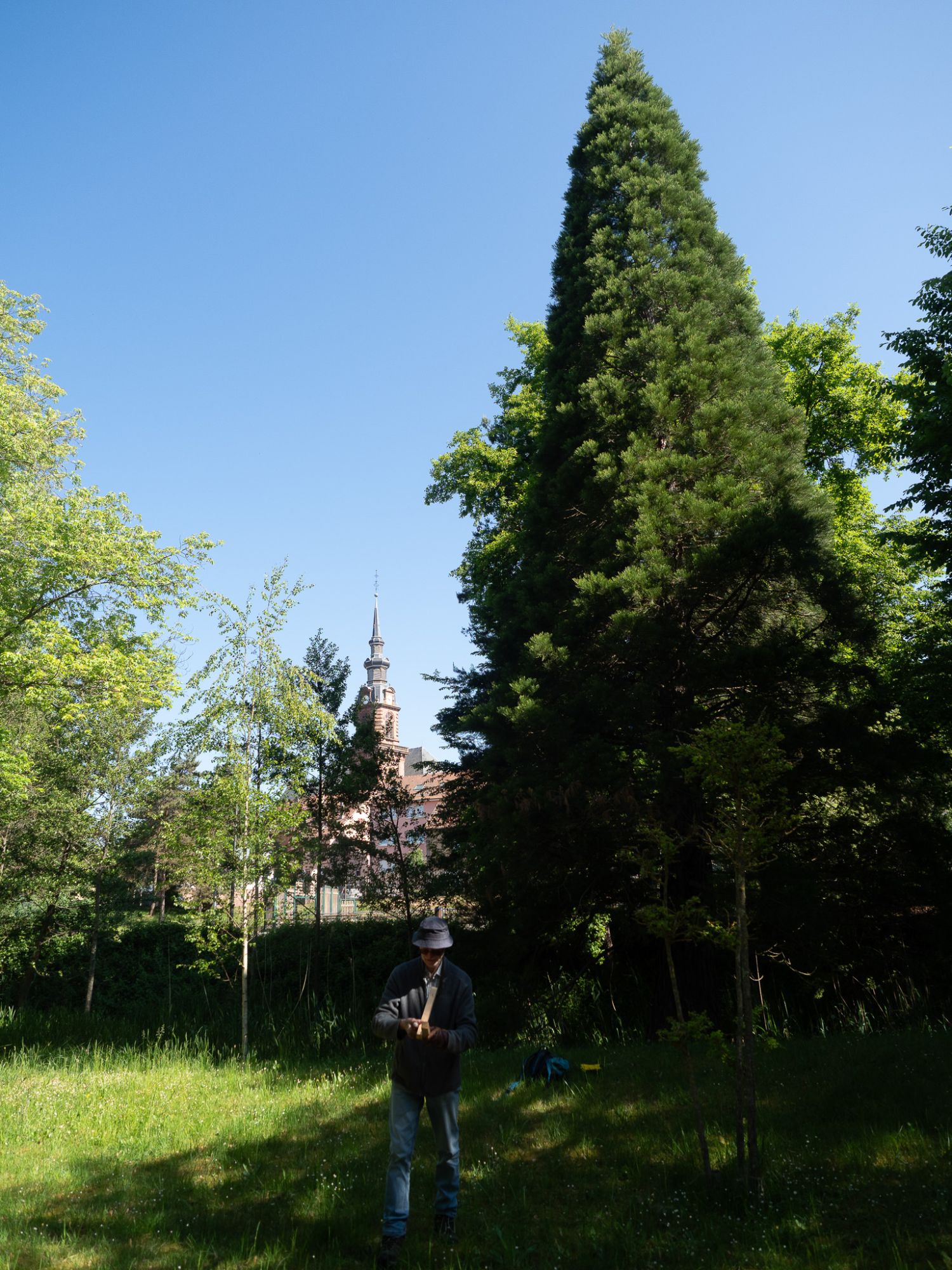
Height and width: It can grow up to 90 metres tall and its trunk can measure up to 10 metres in diameter. Even young trees have very wide trunks.
Bark: Its bark is reddish-brown, very thick (up to 30 cm), soft and fibrous to the touch. It often has a fissured appearance.
Leaves: Its leaves are dark green, pointed scales arranged in a spiral along the branches.
Cones: The cones are small for such a large tree (5 to 8 cm long), oval in shape and light brown when ripe.
Growth habit: The tree has a distinctive shape, very broad at the base and tapering towards the top like an arrow.
MARKER 3: The Acer griseum, or paperbark maple, is an easy tree to identify.
Bark: Its bark is its main distinguishing feature. It is cinnamon or reddish-brown in colour and peels off in thin strips, giving the tree the appearance of rolled-up paper.
Leaves: Its leaves are made up of three leaflets, with a green upper surface and a slightly bluish or greyish underside. In autumn, they take on spectacular orange-red hues.
Size: This is a small to medium-sized tree, generally measuring between 6 and 9 metres in height.
Fruit: It produces samaras, small winged seeds that fall as they swirl.
Growth habit: The shape is often flared, with slender, elegant branches.
MARKER 3: The Parrotia persica, or Persian iron tree

Leaves: Oval with a wavy or toothed edge. When young, they are often red or bronze, turning dark green in summer, then taking on spectacular colours in autumn: yellow, orange, red and purple.
Bark: One of its most remarkable signatures: it is grey-brown, peeling off in irregular patches, revealing shades of green, white and pinkish-brown, giving a colourful mosaic appearance.
Flowers: Small red flowers appear directly on the branches, before the leaves, in February-March. These flowers are discreet, without petals, but with red stamens that stand out against the bare wood.
Growth habit: Often spreading, with sinuous branches that create an elegant silhouette. It generally grows to between 6 and 10 metres tall.
Fruit: Small brown capsules that open to release seeds.
Origin: Native to the forests of Iran and the Caucasus region.
Use: Very popular as an ornamental tree in gardens for its autumn colours and decorative bark.
MARKER 3: Chamaecyparis pisifera ‘Filifera’, or Sawara cypress ‘Filifera’.
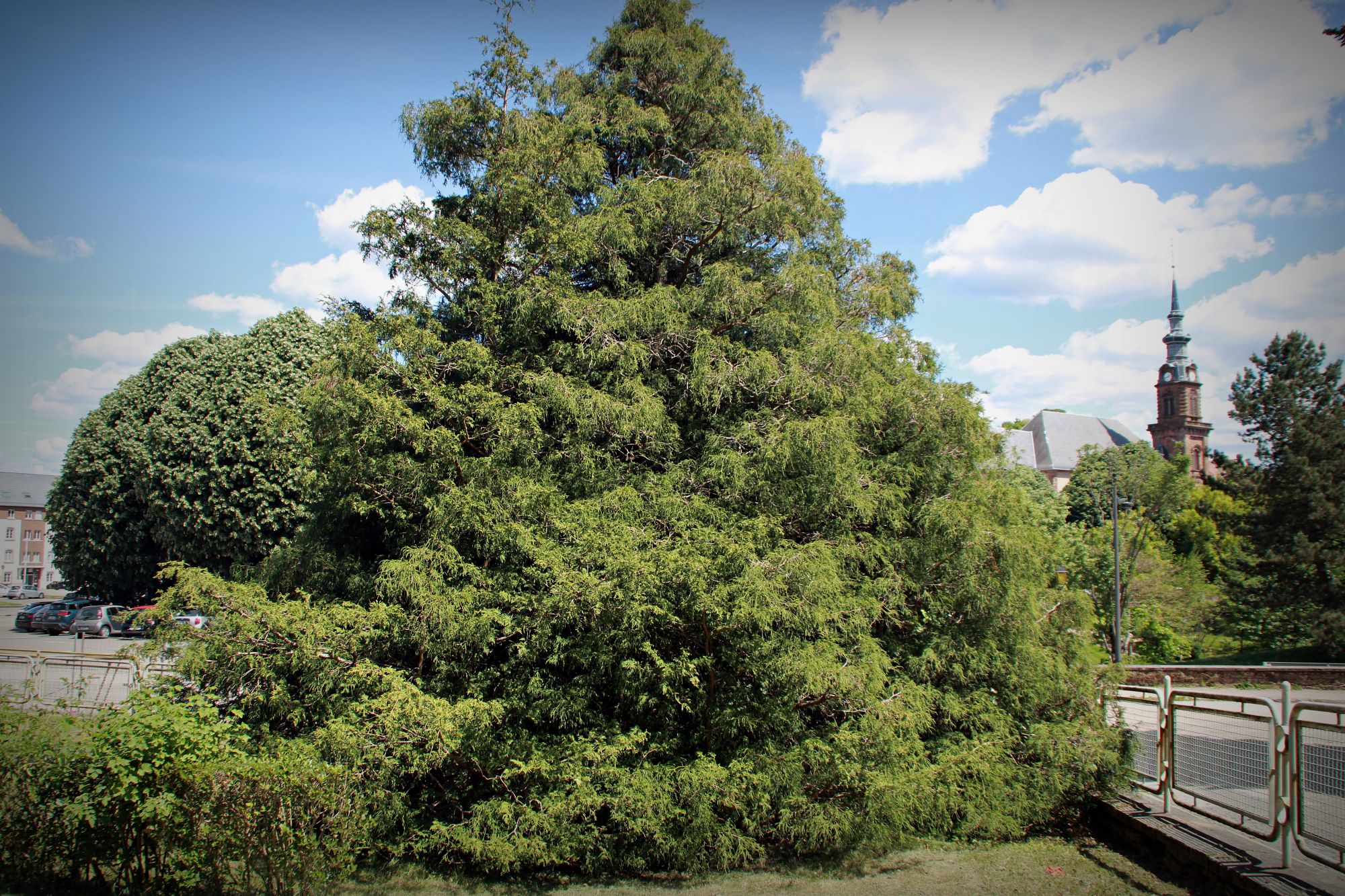
Foliage: Filiform (like threads), very fine and drooping, giving a waterfall appearance. The branches are supple and drooping, often tangled. Colour: Light to dark green, some varieties becoming slightly golden in winter.
Bark: Red-brown, exfoliating in thin strips on older trees. Slightly fibrous appearance.
Growth habit: Compact, spreading form, with a bushy, domed or cascading appearance. Height varies with age, often between 2 and 5 metres.
Cones: Small, round, about 5 mm in diameter. Initially green, they turn dark brown with age.
Growth: Relatively slow, making it an excellent choice for gardens or rock gardens.
Location: Prefers cool, well-drained, slightly acidic soil. Prefers full sun, but will tolerate part shade.
Use: Ideal for Japanese gardens, rock gardens or as a border plant. Often used to add a touch of texture and movement to a bed.
The Villes et Villages Fleuris (Flowering Towns and Villages) label rewards local authorities for their commitment to improving the quality of life in their area, and for their overall strategy to make their towns and villages more attractive through the use of landscaping, plants and flowers.
The tree heritage trail has received support from the LEADER LAG, enabling visitors of all nationalities to discover the wealth of our parks and gardens.







